Tosh Berman's Blog, page 228
May 22, 2014
May 22, 2014
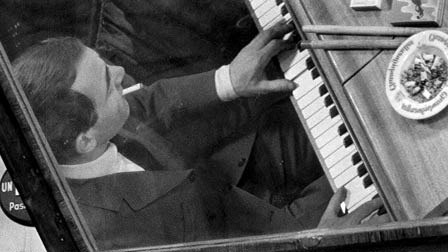
May 22, 2014
Although it's warm and sunny outside, my heart is dark and gloomy. I wake up in the middle of the night, and I’m sure it was from a dream, but for the life of me, I can never remember what that dream was or about. All I know is that I wake up with a heavy heart and a gloom that penetrate my thoughts into a thousand pieces. I wander around the house in the darkness, to somehow shake off the great loss I’m feeling at this moment. I put a recording of “Tristian und Isolde” and explore my inner-thoughts as I watch the dawn rise, into what is truly a beautiful day, yet, the brightness and cheeriness of the birds singing outside, depresses me dearly. I put the volume up louder hoping to be able to drown out the chirps of the bird that is on the telephone wire in front of my house.

Throughout my life, I have tried to keep my disappointment at bay, fearing to embrace failure that’s my life. By a certain age, I wanted to be a successful writer, and still, even at my late age, it hasn’t happened …yet. The dread I have when I go to a bookstore and see the works of authors proudly displayed in the bookshelves and display tables, seemed to mock my failure as a published writer. Yet, by the afternoon, I am at the store, haunted by my lack of success. I go back home to remember that I do have specific duties to do. I do have a pet. It’s a lobster. My lobster is almost 60 years old, in fact, the same age as yours truly. The odd thing about the creature is the fact that they do not weaken as they get older. I, on the other hand, have noticed aging affecting me physically as well as mentally.
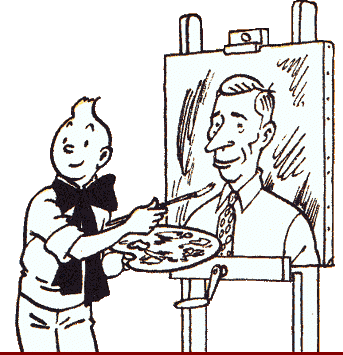
I named my lobster “Thibault, after a character in TinTin. After feeding him, I put a leash around him, and we go for a walk through my neighborhood in Silverlake. People would stare, or even be angry with me, especially those who are walking their dogs. A creature by the way, that I find disgraceful. I can’t stand the tone of a dog’s bark, and a lobster is quiet, well behaved, and is not forcing a personality down your throat. The fact a pet lobster doesn’t seek out your love, also offers me a sense of peace and comfort. As I get back home, my grief and misery seem to be knocking on the door, and I just want to escape into…. Another world. Regardless of the fact that not my favorite painter, I often admire the paintings by Mary Cassatt, mostly due to the images of mother and daughter sharing an intimate moment or two. I have a book of her paintings, that focuses on this one subject, and when you turn a page after another, one is overwhelmed of a world that is almost obtainable, but alas, it is like looking at a month of Sundays, and somehow they eliminate the other six days. To quote a famous Manchester poet, “Everyday is like Sunday/everyday is silent and grey.”

Tears are streaming from my eyes by reading this line, and I go to my piano, which I accustomed to spend a great deal of my childhood on this instrument, with the hopes of having a career in the performance world. But words win in the end, and it is now the medium that will either bring me liberation from pain, or bury me in a coffin of someone else’s choice.
Published on May 22, 2014 09:52
May 21, 2014
May 21, 2014

May 21, 2014
Some years ago, my best friend invited me out for dinner at a local diner in Santa Monica. At the time, I was very broke, and I could use the dinner. The friend of mine had a steady job with a great salary. He insisted that I order the most expensive meal on the menu, which at that time was steak and fries. Afterwards he also suggested that I order desert as well. The waitress that was serving us, I remember, was a beauty. My friend flirted with her throughout our meal. As I was scrapping the dish to finish off the pie and ice cream it was then that he told me he had no intention of paying for the meal.
He then told me to follow him out to the parking lot. But he added “walk slowly.” I followed him out, but before he left the building, he went to the register counter to pick up a tooth-pick. We got into the car and drove off. As far as I know, my friend never did this before, and for sure, not with me. I never brought it up with him why he did this. I just accepted the incident as it happened. One thing I do know for a fact that I would have never done this by myself. Also, I felt bad afterwards, especially for the waitress that we stiffed with the unpaid check. I was concerned that she may be fired or have to pay for our meal. The odd thing, my friend could care less about her or what he put me through. We remained friends, but there was a darkness now when we got together, that wasn’t there before.
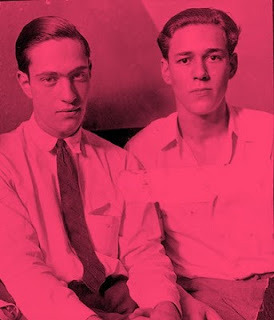
Which brings to mind Richard Loeb and Nathan Leopold, Jr. Both were highly intelligent teenagers, that were actual geniuses. It has been reported that Nathan could speak 27 languages fluently and was a skilled ornithologist. Richard was equally brilliant and he skipped several grades. Both met at the University of Chicago, when they were students. They shared a love for Nietzsche, specifically his theory on the Superman, which many believe meant that a superior minded person could rise above the laws and rules that bound the average man. Therefore why not plan a perfect murder? With that in mind the 19 year old and 18 year old planned their version of the perfect crime, which is tantamount to kidnap and kill a young boy.
It was a criminal offence not for money, because both students were filthy rich, but just for the purpose of getting away with something or the thrill of it all. They selected a 14-year old boy by the name of Bobby Franks, the son of Chicago millionaire Jacob Franks, as their victim. It seemed that Richard knew Bobby well, because they often played tennis together. Nevertheless both teenagers enticed Bobby to get in the car with them, where one of them (we’re not sure which one) hammered little Bobby’s head in. Afterwards they drove to Wolf Lake in Hammond, where they dragged the corpse in the wilderness and poured hydrochloric acid over his naked body. Specifically to destroy the features on his face and genitals. They left his clothes on the side of the road, and then went back to the city. Once there, they wrote a ransom note on a stolen typewriter and sent it to the family to let them know that their son was kidnapped. Once the body was found, Richard and Nathan destroyed the typewriter and were feeling secure that nothing could be traced to them. In fact, Richard hung out with the detectives, inquiring about the case, as well as giving his own spin, like everyone else in Chicago, to the crime as well. He was quoted as saying to one of the detectives “If I were to murder anybody, it would be such a cocky little son of a bitch as Bobby Franks.”
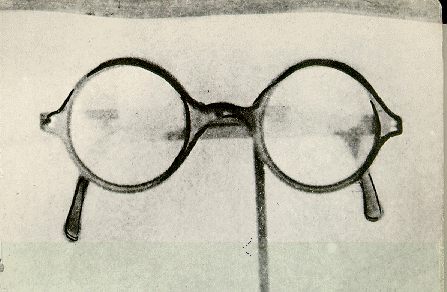
The downfall of the two happened when the police found a pair of glasses not far from the body. The glasses themselves were not that unusual, except it was equipped with a hinge mechanism, that the police found only three people purchased in the Chicago area. One of whom was Nathan Leopold. He was picked up and interrogated by the police. Nathan claimed he knew the area, because of the interesting species of birds in that specific area. He said that he lost his glasses while bird watching and what happened was that he tripped and it must have fallen from his jacket pocket. The police asked him to demonstrate how he fell, and please demonstrate how the glasses fell out on the brush. He did so, but of course, the glasses never fell out of his jacket pocket. Eventually suspicion of the two friends became greater and greater. Also the fact that they were Jewish, wealthy and perhaps gay, had a lot to do with the national press attention as well.
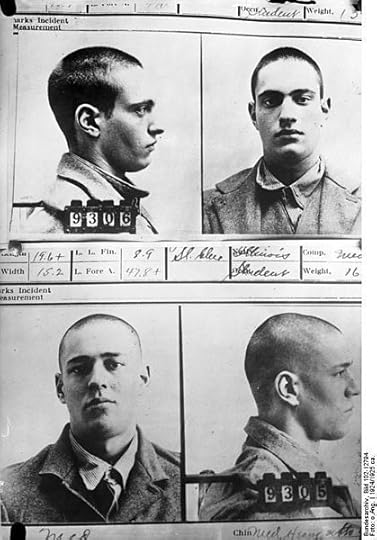
The trial of the century took place and both were convicted of murder. What is interesting to me about the case is not the murder itself or their background as wealthy boys, but the fact that they felt superior to everyone else due to their intelligence. Like myself, I was shocked that I actually left a restaurant without paying, and therefore became a fellow criminal. I would have never done that, unless my friend put the idea in my head. But I did do it, even though I had no money on me to foot the bill. It was a moment’s decision to do something immoral in my point of view. The fact that I crossed that line, has affected me to this very day. Although I haven’t murdered (yet) anyone, I can understand what Nathan and Richard went through. To be honest, I don’t think they even cared that they were caught and sent to prison, the fact is that they needed to be in a moment where they felt alive and against the world. The sin, if there is one, is the thrill one gets from doing something terrible. Not everyday, but numerous times, I still feel bad about the waitress that we left with the unpaid check at the diner in Santa Monica.
Published on May 21, 2014 11:12
May 20, 2014
May 20, 2014

May 20, 2014
As the world gets more complicated and cluttered with information, objects, and just plain things, I decided to go in the opposite direction and become more simple. First things first are clothing. I wish to draw attention to a minimal uniform where I don’t have to think about what I’m wearing on a regular basis. I have decided on the classic white t-shirt and 501 straight legged Levi’s with a pair of black shoes from Red Wing. For an additional color, perhaps a red and white stripped sweater or pull-over will do. Since I do very little physical work, I can usually cut down to one pair of jeans, and maybe five days of white t-shirts in my inventory. Five days of socks, usually stripped, but always a dark color like gray and black stripes.

As you most know by now, I don’t do work. Well, let me put this in another way. What I do is work, but not for money. I lost my job about two years ago, and I’m having a hard time getting back on the gravy train of a regular salary. What I have been doing is writing up to 140 stories, regarding mostly my life, as a man who is just trying to simplify his life. Basically on an everyday basis, I put on my uniform, shave, and then go off to the Central Library to do my writing. I stop when my hands start hurting, and then come home and try not to spend any money whatsoever, because due to my lack of “work. ” I have no more money left.

This causes significant amount of anxiety, but I’m on a suicide mission to finish writing 225 more stories and then I can relax and ….Well, you know whatever the end brings to my soul. With respect to my clothing, I rarely go out for social visits or go to ceremonies. For instance, I would never go to a wedding or a funeral, due to my lack of proper clothing for such affairs. Also the blue jeans and t-shirt combination are a look that doesn’t offend anyone. On certain bodies, it can look rather stylish, sadly I’m getting a tad fat. But even that, it brings a sense of focus in my life. Once I die, I wish to be dressed in my T-shirt and blue jeans, and then burned to the crisp, and eventually place my ashes in the Levi’s headquarters in San Francisco. The thought of that offers me a sense of peace and happiness. On the other hand, living is a total drag at times.
It is indeed hard for me to wake up and face an empty notebook page with my pen by its side. I stare at the lined paper till something comes towards my chest. At first I thought it was the first sign of a heart attack, but it is not! The idea for a narrative is very physical. It is almost like a beautiful woman embracing you around the waist. You can smell the essence of her skin and hair, and then bingo, you start writing.

Also you consistent readers, you know I am a publisher as well. And within a couple of weeks, I’ll be doing a reading of Shakespeare’s Sonnets from the original edition that was published by Thomas Thorpe in 1609. Some years ago I purchased a copy of this rare item at Mystery Pier Books, which cost me a fortune of course. But how could I resist as a publisher myself. The thing that is interesting to me, is that Thorpe may have published the Sonnets without Sharkespeare’s approval. In other words, he stole it. This of course is only a theory, because as we all know, history is told through someone’s point-of-view, and who knows the extent to which that goes. Nevertheless, it doesn’t matter in the end, because Thomas Thorpe died in his early 60s and in a poorhouse on top of that. Surely as a publisher I will be going down that same route as well.
However, before all of that, I will do a public reading of the Shakespeare Sonnets, dressed in my normal uniform, because I think that will bring out the words more. The visual sensibility of being aware of one’s clothing even helps me when I’m writing with my pen and paper.
Published on May 20, 2014 10:10
May 19, 2014
May 19, 2014

May 19, 2014
About a month ago, I decided I wanted a servant. Since I now have this strict schedule of writing a story every day, and then work on my memoir, I needed someone to take care of my laundry, light housecleaning, answer my phone, prepare my morning bath, organize my papers for the day, and also prepare my bedding before I sleep at night. For instance, I have been too busy that I haven’t had a chance to get my regular scheduled haircut, and I’m looking a tad messy, especially when I wear dirty clothing. The servant should be somewhere between the age of 35 and 50. I believe that it would be best if he was asexual, because I don’t want to be involved in any manner in his private life. In fact, I request that he doesn’t have a private life. I really need someone who will focus on me, and only yours truly. Especially when I’m working on my various writing assignments.
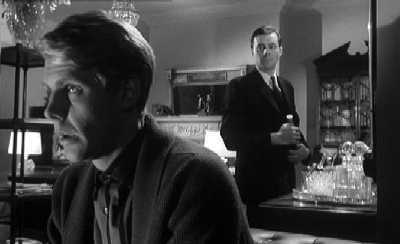
I need the space to concentrate on the words on the page, and I think the only relationship I can have right now would be a full-time paid up servant. He will be called upon to wear a suit of some sort, and an apron when working in the kitchen. I’m a picky eater, so the butler will have to know exactly what to make, and make sure he doesn’t put his personality into the preparation of the food, or jazz up the recipe. Minimal life is the best for me, and if I can just narrow down all the outside noise into a hum, so I can work freely on my writing that would be great. He must never make “small talk” with me, and really only make a noise, when I ask him for something. He should be my shadow, and somehow know what my needs are before I verbally ask for something. He must know and understand me. Also, it’s important that he never criticizes me in public or in private.

Time-to-time, since I’m so busy with my writing, I will need him to perhaps write my normal daily column for Facebook and my blog at http://tamtambooks-tosh.blogspot.com. But of course, only with my approval, and I must take full credit for that writing. I like a certain amount of bath powder in my bathtub, and the water should be warm when I enter the tub. I don’t like to dip my toe in the water beforehand, I like to walk in, and with the full force of my weight, sit down in the powdered water. I don’t want to even think about it. The butler maybe advised to check the temperature as well as the texture of the water before I even enter the bathroom. On the subject matter of the bathroom, I also request that the butler does the flushing of the toilet. I have no interest to wait around, when writing or research is needed, to see if everything is flushed properly. Urine stains, if needed, must be cleared up seconds after I leave the bathroom.
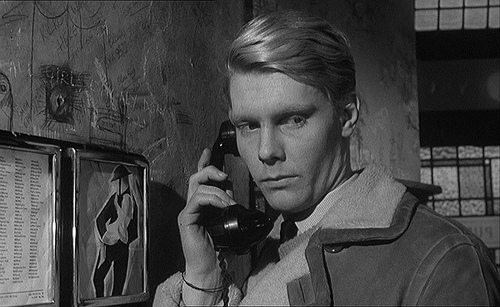
I also need the butler to drive me to specific locations. Mostly to the library in downtown Los Angeles. He needs to take me to the corner of Fifth and Grand, and drop me off there, without being late or of course, chatty. I also demand that he comes to the library with me, and as I write in one of the cubicles, he needs to get a chair and sit behind me. If I use the library bathroom, he is to go in before me, to make sure it is properly clean, there’s enough toilet paper, and no peculiar people hanging there. If I need to get a book, he has to take my note and give it to a librarian to locate that volume.
I insist that the Butler lives in my house with me. I expect service 7/24 and will not allow illness or tardiness on the job.
Published on May 19, 2014 10:27
May 18, 2014
May 18, 2014

May 18, 2014
It is strange to see one’s world being represented in a book, TV show, or film, and realizing that you are essentially part of it, but the fact is, you’re not. The first time I have ever seen or heard of a beatnik was Maynard G. Krebs on the “The Many Loves of Dobie Gillis” TV show. The irony is that many consider me the child of the Beats, due to my parents of course, but mostly how the media portrayed them in various books regarding my father, as well as publications like Look magazine and so forth. Even today, my life is well-documented by others, who I have to presume knows more about me than I know myself. The biggest archive of images of yours truly is at the Getty Institute, yet I don’t own any of the images of myself, nor have I seen them.

One soon realizes that a reality or a truth is not the main end-product of journalism or a narrative. I think there is a need to have a narrative where this is a beginning, a middle, and of course an end. People have trouble dealing with a narration that is messy or not complete. But the truth is to be human is to be inconsistent with one’s history or time. We often look back to see where we are now, but how can one trust a narrative that is not clearly stated by the subjects themselves, but by others who claim to have the story, because they read it at so-so’s publication or heard rumors. With respect to my life, what I know is what I don’t know. There are deep mysteries in my life, and I don’t think one can clearly dig it out from the rest of one’s history.
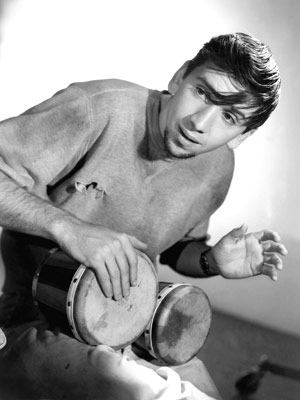
The funny thing is when I do run upon a picture of myself or others at that time, is how timeless they or everyone looks. When you see Maynard, he looks very dated. Or if you see any film made in the late 50s regarding the alternative social scene or the beats, it looks like someone’s remorseful sense of memory. Mainstream cinema has never portrayed an alternative world properly. I think due that the filmmakers have very little knowledge of that world. Or perhaps it has something to do with the camera, that truth looks into the viewfinder, and fiction comes out at the other end.
It must have been very strange for Jack Kerouac to walk into a room, and everyone knows who he is and what he is. The truth is one doesn’t know who he is, they just presume that they know, when in fact their knowledge is at its best, second-hand gossip. Although not famous in the sense of Kerouac (of course), I feel the “eyes” look at me as I enter a room full of strangers. They know who I am, but I haven’t the foggiest idea who they are. They already have an opinion on me, and yet, I am totally clueless who these people are.
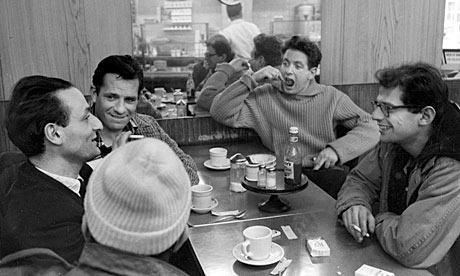
I have consistently preferred the world of shadows than bright sunshine. The freedom of walking among the shadow images of tall buildings and various trees that stand monumental in certain parts of downtown Los Angeles is my natural playground. Seeing myself in a book, of someone else’s making strikes me as a false image, because it is a photograph that was made in a second, and so far my life has almost reached 60 years. Yet one is judged by an image that took seconds to take, and I must somehow live that ‘dream’ for others. The truth is I refuse to. The spectacle wants its narrative, and I refuse to partake in someone else’s sense of what is a narrative. The only narrative I am interested in, is the one that I write or produce. Be aware of false footnotes in history, our memory is only as good as what we want to believe.

Published on May 18, 2014 10:17
May 17, 2014
May 17, 2014
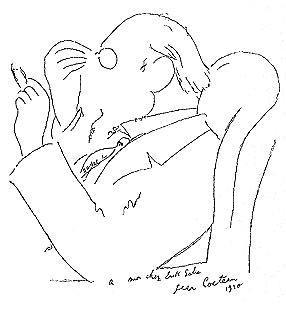
May 17, 2014
Every morning, as soon as I get out of my bed, I go to my piano, which is always three feet away from my pillow where I lay my head. I start to play “Vexations,” till my fingers start hurting and then I stop to have some breakfast. I can only eat food that is white. So that means white bread, egg whites, tofu, and a glass of milk. I find there is a purity in the color white. Also it is very easy for me to imagine ‘white’ in front of me. When I think of other colors, I become focused on the deepness or how light that color is. ‘White’ is just white, and I can mediate on that for hours.
I sleep in a white t-shirt and white cotton shorts. My bed sheet is white as well. I once attempted to wear a different color of bed clothing, but I find that in conflict with the white sheet. What I notice is that once you make the commitment to the color white, you have to stay pure and the fact that you don’t mix white with any other colors is sort of spiritual bliss. When I first started to do my own laundry, the first thing I learned was to separate the white from the colored fabrics. The reason is you don’t want the white cloth to be colored by the other fabrics. But beyond that, I found it soothing to be able to put all my white items in one washing machine, and once it is finished, I noticed that the whiteness is all even, it is like the whiteness bonds with all the clothing and makes it into one. I have this image in my head, since I was just a little boy, playing outside by the laundry as it was drying and hanging on a wash line on a spring sunny day. The whiteness of the fabric seemed to go so well with the weather, that I always felt that if you clean your white laundry and put it out to dry naturally in one’s yard, that it will have to mean we will have beautiful weather that day.
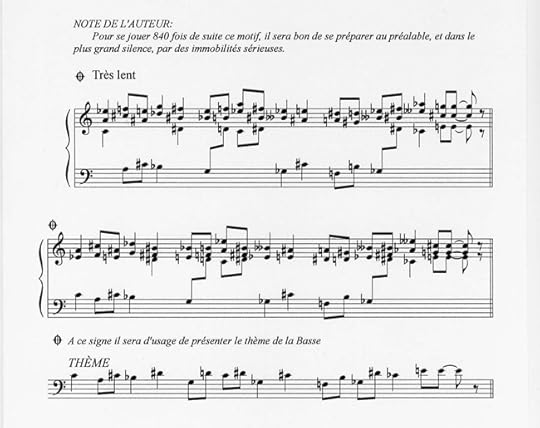
Not long ago, after playing Vexations on the piano, which by the way is totally white, except for the black keys, I decided to purchase items that were only white. I went to the hardware store to buy glue, and once I got back, I emptied a small amount onto my hands and just found it marvelous how the texture feels in the palm of my hand. I like to let it dry on my skin, and then slowly peel off the glue, which I find relaxing. I then prepare my meal for that day by making French toast, but only with white bread, milk, egg whites and white sugar. The mixture of the texture of bread with all the other ingredients gave it a smoothness that was also pleasing to the senses.
As I got older, one of the things that really bother me is the sky. I didn’t like the coloring or the structure of the clouds that occasionally passed on by. Nighttime was totally out of the question, because I can’t stand dark colors in either clothing or in nature. What I desire was to see the sky as pure white. Neither did I like white puffy clouds, because I find the texture disturbing. I want the sky to be flat and white. No depth, no wrinkles, just pure whiteness that goes on forever. I often wonder if death is white. For instance, I have always heard that when one approaches death, they see a blinding light. That I find disagreeable as well, because I like to think of death as being a space that is of course, pure white.
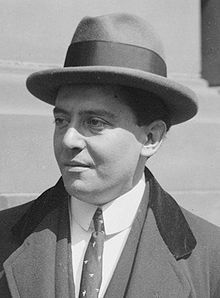
When the evening comes into my world, I usually find some music by Aldo Ciccolini on my turntable, and then to cover the dark outside world with my white curtains, blocking out everything that is hideous in my life.
Published on May 17, 2014 11:33
May 16, 2014
May 16, 2014
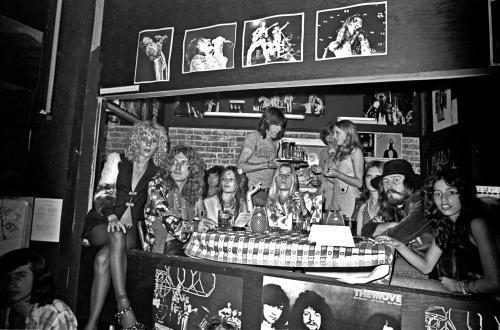
May 16, 2014
When I was 18, I was right in the middle of the Chinn-Chapman world of a series of singles by The Sweet. Totally disposable pop for disposable times, that served disposable people, and that includes yours truly as well. I was totally focused on getting wasted, but at the very least, I wanted to pass out with a copy of “The Picture of Dorian Gray” on my lap, and idealistically at a little round cocktail table at Rodney English Disco on Sunset Bouvelard. It was a very difficult culture for me, because I wanted to go to Rodney’s because all the girls I have admired at Taft High School went there, and sadly, all the girls went for the older guys who hung out there as well. So I felt like a double-loser both in the school yard as well as this school yard, otherwise known as Rodney’s.
At the time, it was very difficult to hear the Chinn-Chapman bands The Sweet, Mud, and Suzi Quatro, because American radio basically ignored these records that came out of the U.K. In the early 70s. I was attracted to their bands, not by their photographs, but by their song titles. “Little Willy, ” “Wig-Wam Bam, ” “Tiger Feet, ” “Devil Gate Drive, ” The Sixteens, ” and so forth. On one level they were very silly, but on a deeper plane they fed my soul, that was very vacant at the time. My late teenage years wasn’t one of exploration, but just trying to conform to what was routine in the world that was the San Fernando Valley. Which meant to hang out with the glam girls, while they spent hours trying to find the right outfits to wear, as well as supplying me with liquor and vinyl on the portable turntable. The girls I knew didn’t really have impressive records in their collection. Mostly Queen albums, which I always felt were an imitation of something that is out there, but I didn’t know what at that point and time. The songs were nice, but just so plastic sounding to me. At least the Chinn-Chapman records knew they were plastic, and they sort of conveyed a world that is plastic, surface, and teenage. The beauty of Mud, Sweet, and Suzi Quatro was that they were teenage music, and me being at that age, they totally reflected on what was happening in my life.
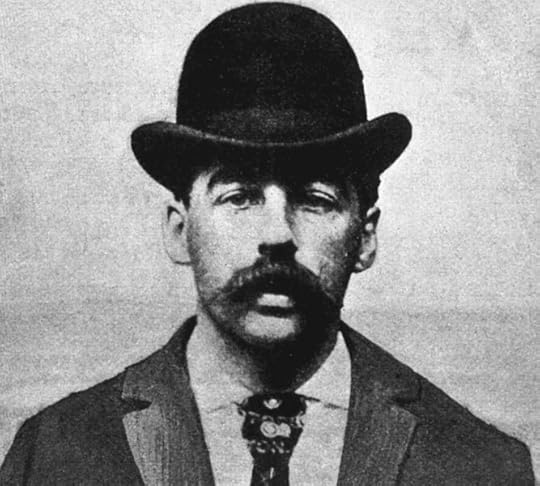
Sadly, and on the other hand, I also had an interest in serial killers. No, no not Charles Manson. I couldn’t stand that stupid hippie culture stuff. I wanted the real thing. H.H. Holmes was my main man. Sometime around 1893, he built his own hotel during the World’s Fair that took place in Chicago. The unusual aspect of this hotel was made for one purpose, and that was to use the building as a killing factory. There were at least 100 rooms built without windows. Holmes would have women stay at his hotel and each room was a death trap of some sort. Usually he would suffocate or gas them, whenever his mood served his desire. After their deaths, he had a secret chute built-in all the rooms that led to the basement. Once there, the bodies were dissected, stripped of flesh, crafted into skeleton models, and then sold to medical schools.
Now what interested me was not him specifically, but the fact that he went out of his way to build this huge structure, to only serve his fantasy (well for him it was real) lifestyle. It is always bizarre to me that someone would make their perfect world, yet somehow evil would creep in, with respect to the big picture of it all. For some, having that structure of a building would be enough, but he didn’t build it for aesthetic reasons, but mostly to feed his sick passions.
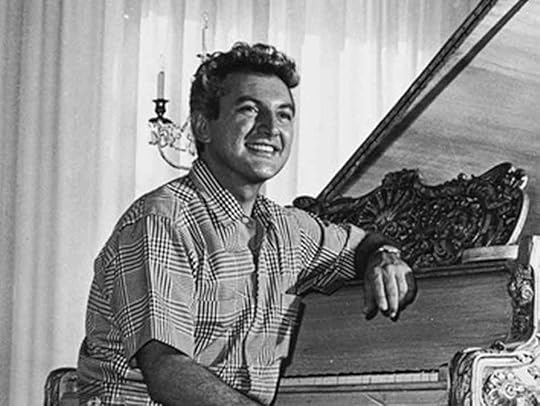
Then there is someone like Liberace, who built his world, but more for an aesthetic pleasure than anything else. Perhaps designed to avoid the outside world, which was so different from Liberace’s sense of utopia. Whenever I go to Las Vegas, I always visited the Liberace museum, and I loved it, because I’m surrounded by a world that is artificial, and totally against nature. Through out my life I sought to build my own inner world, where everything else is totally outside that world.
When I got older, I left the serial killer fixation at the station ‘teenager’ and seriously started collecting records. As of now, when I check my collection, I truly see it as a self-portrait. But interestingly enough, I see nothing of the Rodney years in my collection. I sort of edited that out of my life, and now I enjoy my new identity as an adult, with a long memory.
Published on May 16, 2014 10:25
May 15, 2014
May 15, 2014
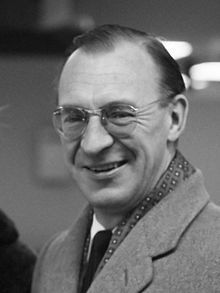
May 15, 2014
It has been expressed that Norrie Paramor passed away without getting any recognition for his services as producer of various Cliff Richard recordings, but the one’s that I find the most interesting is his work with The Shadows. His recordings of the pre-fab-four are to this day the most haunting to me. When I hear Hank Marvin/Jet Harris recording from the early 1960s, it sends me to a world where I can smell the polluted River Thames, and the “Man of Mystery” overwhelms me with a sense of melancholy.

I think their masterpiece is “Wonderful Land” due to not only Hank’s brilliant guitar playing, but also how Paramor’s strings fit over the song like putting a coat over a drunk man in some Soho street in the middle of the night. Of course there’s great skill in making these sounds, but it's the magic aftertaste that gives me goose-bumps. Eno is another favorite of mine, but in the long run, ironically enough, he hits against a wall, like a car speeding towards its final destination. He is all about thinking and sound making, but there is something vacant regarding the emotional aspect of his music making. His records all have roots from someplace else, mostly from the avant-garde recordings of the 50’s, but also the classic low-budget recordings from the 60s as well. The big difference between Eno and say someone like Joe Meek, is that Eno is totally aware where he is, and what his place in history will be. Meek, like Oscar Wilde, thought at the very the end no one will pay attention to him. Norrie Paramor I think should be considered to be as important as Meek and of course, Brian Eno.

Paramor reminds me of certain portraits done by Richard Avedon, in that you’re looking at an image that is very stark, but the emotional aspect of that subject matter really yells out to the viewer. The Shadows’ “A Place in the Sun, ” especially in stereo is like overhearing a conversation between the two guitars. It’s intimate, and the track on the right is slowly embracing or chasing the guitar track on the left. The sensuality of the tension being built up is so subversive with respect to a recording made in the early 60s. One of my all-time favorite authors is Arthur Schnitzler, because the way he portrays the main character’s struggle to reach out for some sort of reality, in a world that is slowly going insane. The tension between the culture and the individual is therefore very strong, especially in his short novela “Dream Story.” For a man who kept track in great detail of his sexual experiences, he writes poetically about the nature of sex as it is placed in the context of 19th Century Austria. So he is a writer who can record his times accurately, yet play with that information and turn it into a profound piece of art, that is an odd juxtaposition of being turned-on and horrific at the same time.
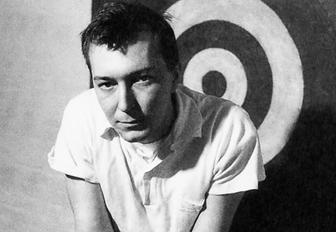
With respect to Eno, I admire him greatly, especially for his early recordings. If there was a sense of passion and being adventurous, it would for me to be his first four solo albums, including “Discreet Music.” It can be either due to youth, or Eno just learning something new, but the way he used the sounds of the past (Meek and Paramor) to in his mind, something totally new, should be applauded. On the other hand, it is a work that can be stale, because again, it lacks a certain amount of emotional care or landscape. L. Frank Baum invented the world of Oz, that is not logical, but it is a world that is composed of desire, a need for home, and therefore an emotional state of mind. When I look at the works of Jasper Johns, I’m seeing how he use the everyday or something that is emotionally loaded, such as the American flag, and give it a fresh perspective. But at heart, I think the true masterpiece of someone like Walt Disney is “Plane Crazy, ” which was the first Mickey Mouse cartoon. Who would have known it would have led us down a road that is now Disney culture. A world that seems to be emotional, but the fact it is in the business to look “emotional.” So when I hear the works of Paramor and Meek, I feel like I am about to enter a great journey. When I listen to Eno, I feel it's the end of the journey.

Published on May 15, 2014 13:04
May 14, 2014
May 14, 2014
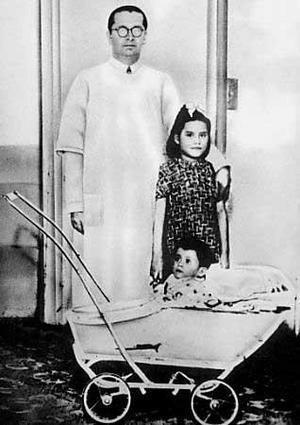
May 14, 2014
Lina Medina is the youngest confirmed mother in medical history. She gave birth to a boy when she was five years old. The boy had a natural life, but didn’t know that his mom was a mom. For the first ten years of his life, he thought that was his sister. He lived till he was 40, but mom is still alive and living in Peru. When her parents brought her to a doctor, they thought she may have a tumor, but the hospital confirmed that she was seven months pregnant. It’s very rare, but it seems Lina matured quite early in her life. There was also the big question who is the father? It was suspected that it was Lina’s father, and he was arrested, but they found no proof that he was the actual father. Lina either didn’t tell, or she can’t remember. Nevertheless, her son Gerardo, who was named after the doctor who delivered the baby, had a reasonable normal life, but died from a bone marrow disease.
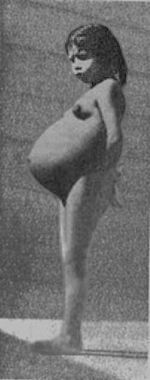
I first heard about the strange occurrence of Lina, while studying Lou Harrison’s music and his interest in Peru. It is always ironic that how one can read about something else, and it will lead to another avenue or narration. The photograph of Lina, expecting at seven months, is an image that haunts me for various reasons. She of course, in her time, became a media darling. A producer in America was trying to entice her with an offer of $5,000 to document her life, but she or her family didn’t give an approval. But there is likewise a report that her doctor, had made films of Lina for scientific documentation, but either by chance or karma, the film footage was in a baggage and was dropped into the river while crossing a very primitive bridge. So there are very few images of Lina’s pregnancy. Well, actually one still exists.
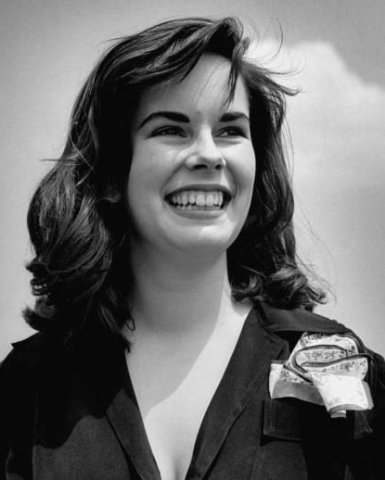
My mother had me when she was 19 years old. So, it is my nature to take an interest in women who gave birth at such a young age. Oona Chaplin, was also 19, when she gave birth to her daughter Geraldine Chaplin. It must have been strange to be married to such an iconic figure and yet, your sole job, was to raise the children in that family. Oona has always been interesting, because she is a mystery to me. She started off her life as the daughter of the distinguished playwright Eugene O’Neill, who pretty much ignored her during her lifetime, as well as distancing himself from her and Chaplin, who he reportedly hated. Nevertheless she was chosen as “The Number One Debutante” of the 1942-1943 season at the Stork Club in New York City. It is a likelihood that Charlie met Oona at the Stork Club. But history said that they met when she approached him for a role in a film, that eventually didn’t get produced - nevertheless they fell in love, and she gave up her dreams of being just an actress. She gave birth to seven more children, with Charlie as the dad, and that was very well the twilight years for Chaplin, with respect for his film work. The McCarthy era was a very harsh decade for people like Charlie Chaplin. In 1954, Oona gave up her American citizenship and became a British citizen. So, first she had to strip her ambitions to be an actress, and then eventually remove herself as an American.

As I write this, I’m also facing my Facebook page, and I decided to look up Oona and Lina. I don’t know the family history, but there is an actress named Oona Chaplin, who I presume is the granddaughter of our Oona, as well as a page for Lina Medina! It is just so odd that we have something like Facebook in our lives, because it attaches so many people, yet makes them one. Today it’s Mark Zuckerberg’s birthday and ten years ago, Facebook started, and what I found interesting is that he’s color blind. He chooses the color blue for Facebook, because it is the one color he can actually see. Also the fact that he was born in 1984, says a lot about our culture.
Published on May 14, 2014 10:21
May 13, 2014
May 13, 2014

May 13, 2014
I rarely write about myself as a publisher. Mostly due to the mystique of working behind the velvet curtain and not letting anyone see the work that is put together, and to be perfectly honest, I do not know exactly what the hell is the proper way of being a publisher. For me, it started off as Show N’ Tell at elementary school. As young students, we were asked to bring something from home to show and present to our class. Most people brought their favorite object of some sort. It could be a doll, from a girl or a toy truck from a boy (very gender specific in those days). A lot of times it can be something personal like a watercolor painting or an ashtray made by dried macaroni and then usually painted either gold or silver. What I brought to the classroom was for me the most important item, or publication in my existence at that time - TV Guide.
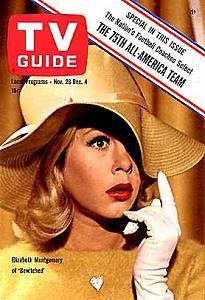
Although I wasn’t really allowed to watch a lot of TV at home, except when I stayed with my grandparents over the weekend, where it was TV viewing non-stop, from early morning to late afternoon, following a break where I go outside to run, walk or play, and then back to the TV set for more intense viewing till bedtime. I would like to say that I learned to read at a young age from looking at my parents large library of books, or an interest in children’s literature at the time, but the truth is the main source of reading was the weekly TV Guide.
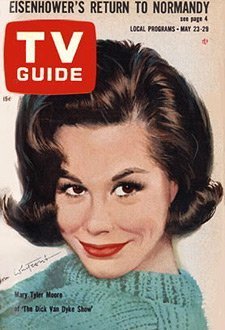
I would get the TV guide on a Sunday morning, and with a color pen, mark all the shows I wanted to watch that week. My hobby was a strange one, since I mentioned I couldn’t watch a lot of TV shows at home, I pretended to, and basically there are shows that I never seen, but nevertheless I read about them and marked it off on the Guide as seeing them. So, I had an imaginative version of a lot of shows, but only the one’s that were shown on a regular basis from Monday to Friday. The weekend was real-time watching from Saturday morning to Sunday night. Bear in mind this is before cable or streaming, or even VHS taping. If I wanted to watch a show I had to be there on time and in front of a set. Occasionally I had to go to a party with my family or there maybe a family gathering over the weekend, which spelled out death to me. The one thought in my mind was that I was missing an episode of a certain show. “Johnny Quest” comes to mind a show that I was devoted to, and it was rare to have an animated show playing in the evening. But I remember we had to leave the house for some unimportant reason (to me at least) and I had almost a panic attack thinking that I was missing that episode. Luckily, over the summer they repeated a lot of shows, so if I blew this one, I more likely can see it three or four months later.
I would wake up in the morning early to study the TV Guide. With a pen in my hand, I would read each description of every show. Even shows I have no interest in, I just wanted to make sure I covered the waterfront as one would say in my favorite song. I was deeply concerned with programming that started around 11 PM, because I was forced to go to bed at that hour. I would lie awake in bed, thinking what I was missing on the TV set. Mostly films, but they always sounded interesting to me. One time I remember seeing Howard Hawk’s “The Big Sleep” on Channel 5 at 9:00 P.M. My family was big cinema goers and sometimes they would take me as well. But to be honest I rather watch a movie on TV, with the commercials running through it. At the time it was hard for me to pay attention to a whole film being played without interruption, because I felt my mind was going to different places, and watching a commercial was like reading a book and waiting for the end of the sentence or the paragraph break. Also the description in the Guide was great: “
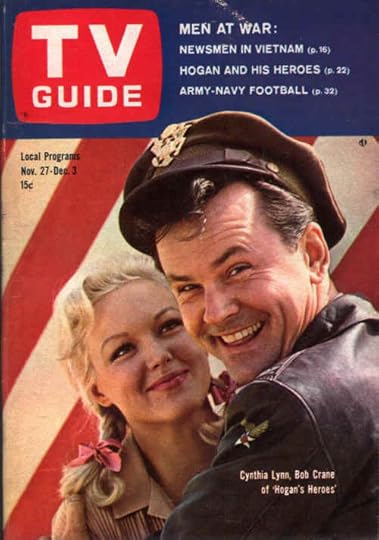
Bear in mind that, I never collected TV Guide. Once the week was over, I would throw it away, even though I wrote detailed notes or footnotes at the bottom of the page, regarding a show that I would have an interest in seeing. Also as a literary style, I was very much taken by the caption description of specific episodes. There was something very zen-like at times. For example, here’s “Gomer Pile, USMC.”
“Sargent Carter’s sister tells him she’s getting married - but Carter doesn’t approve of his future bother-in-law. Gomer: Jim Nabors. Carter: Frank Sutton. Colonel: Forrest Compton. Then there will be a separate paragraph giving credits to the Guest Cast. Babe Carter - Marlyn Mason. Kanobly - Bill Idelson. Then oddly enough there is a separate line after that saying “actor Bill Idelson co-authored the script.” For me being a young cineaste or TV-fan, this was priceless information.
As I approached my teenage years, I got more interested in literature, which eventually leads me to publish. Nevertheless, the first work on paper that made an impression on me was for sure TV Guide. My first interest in writing was hoping that somehow I could get a job writing plot caption in the publication. It was incomprehensible to me that these writers were never known, and in a way it is a lost art form or literature that no one cares about - except me of course.
Published on May 13, 2014 09:46



